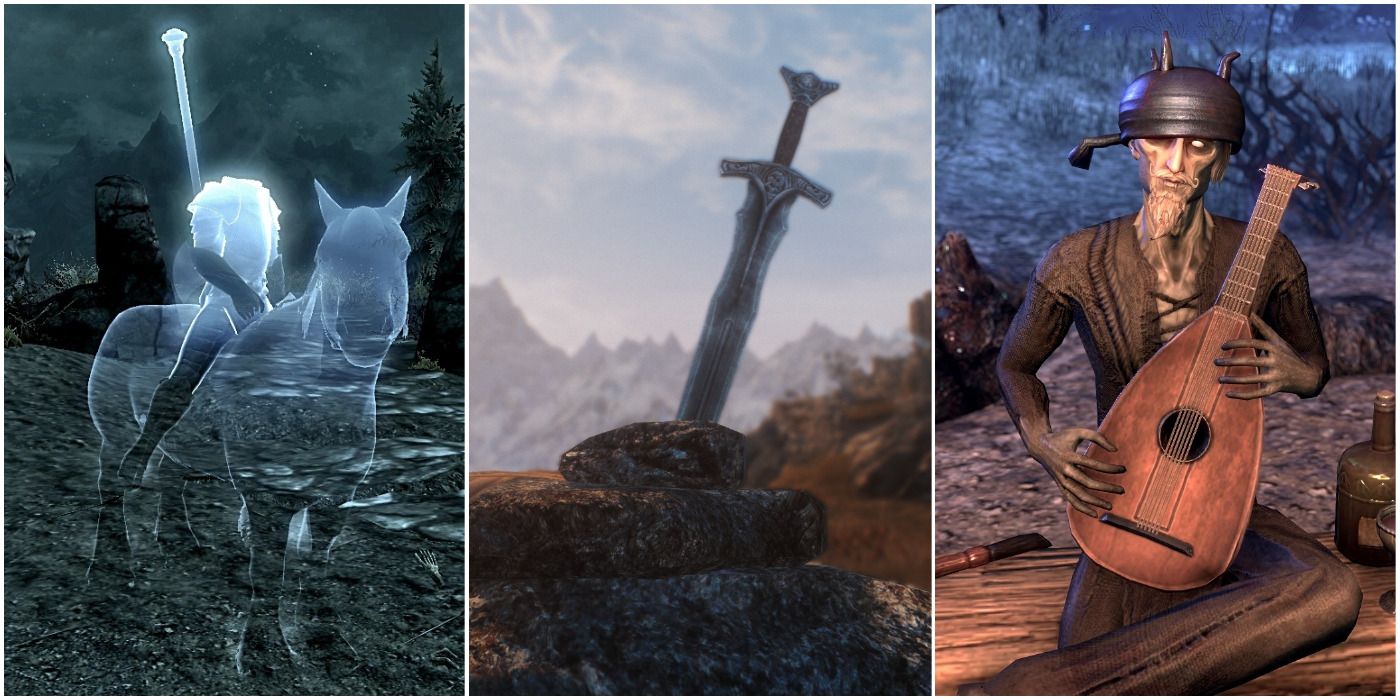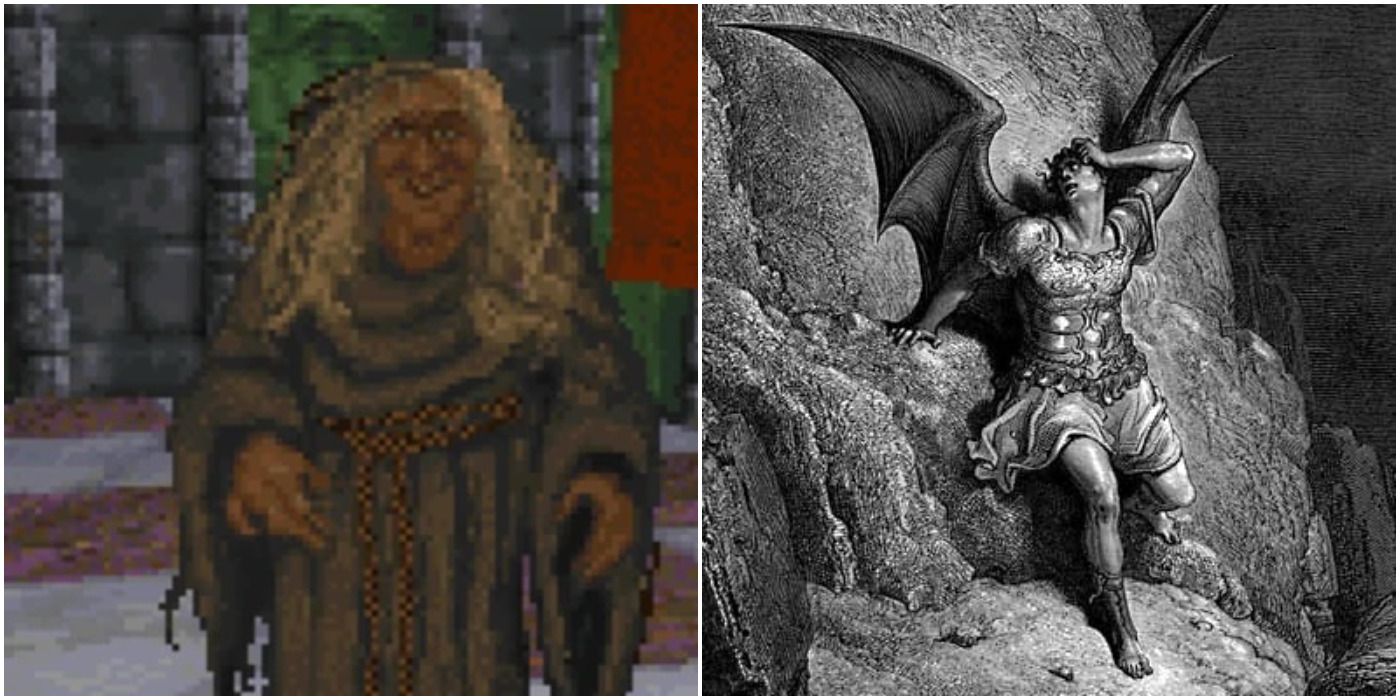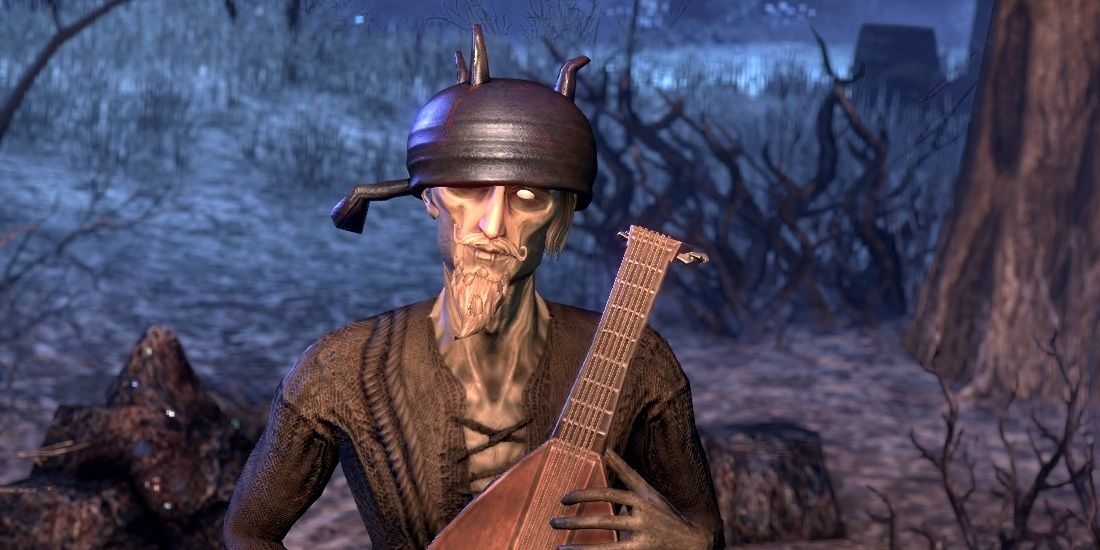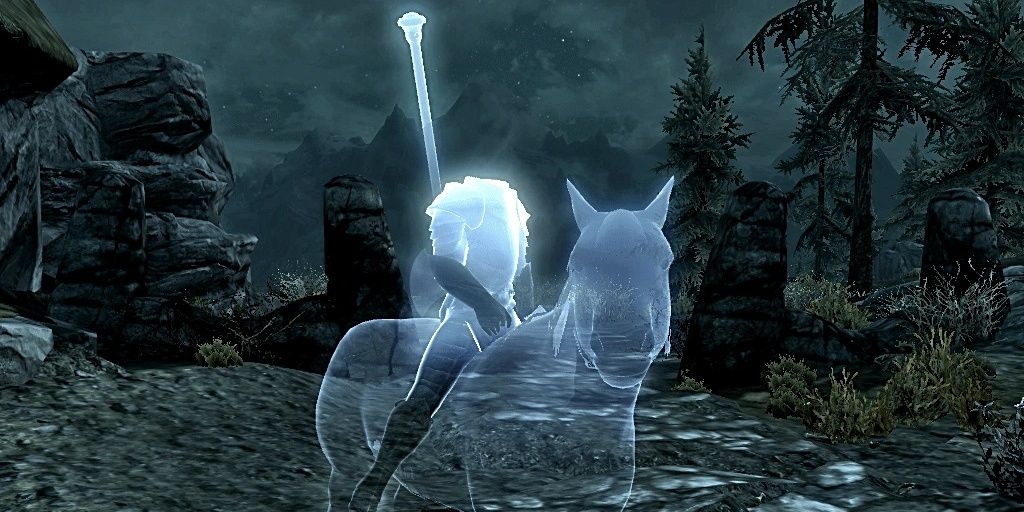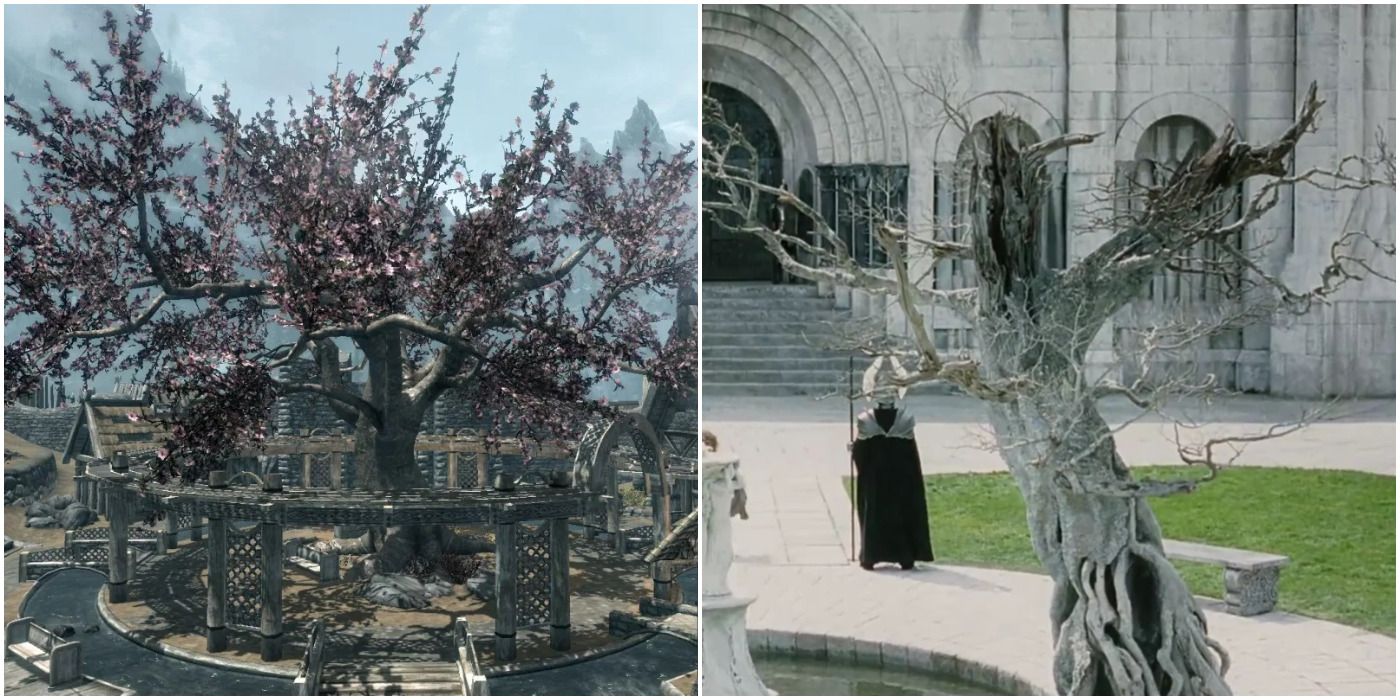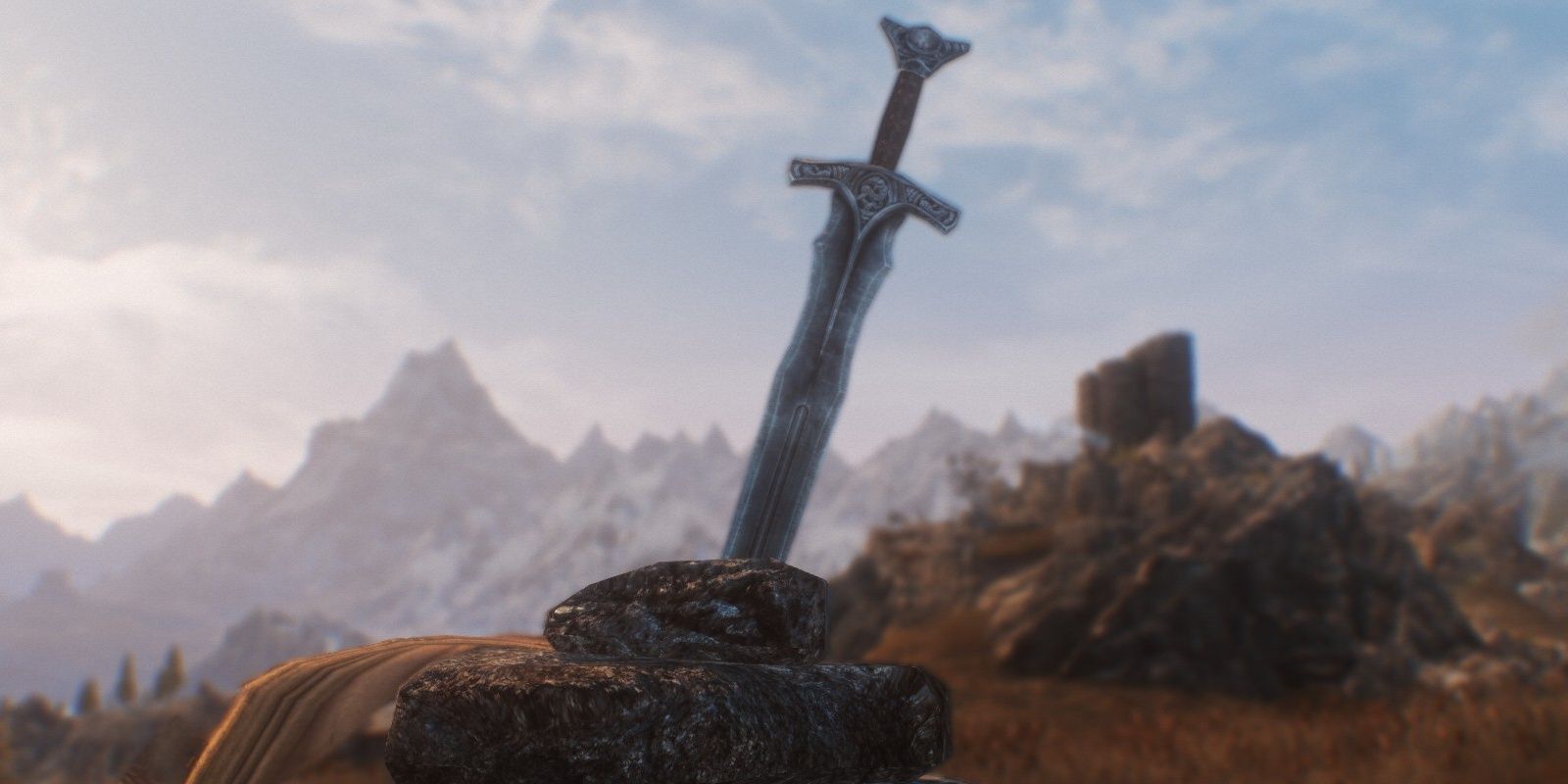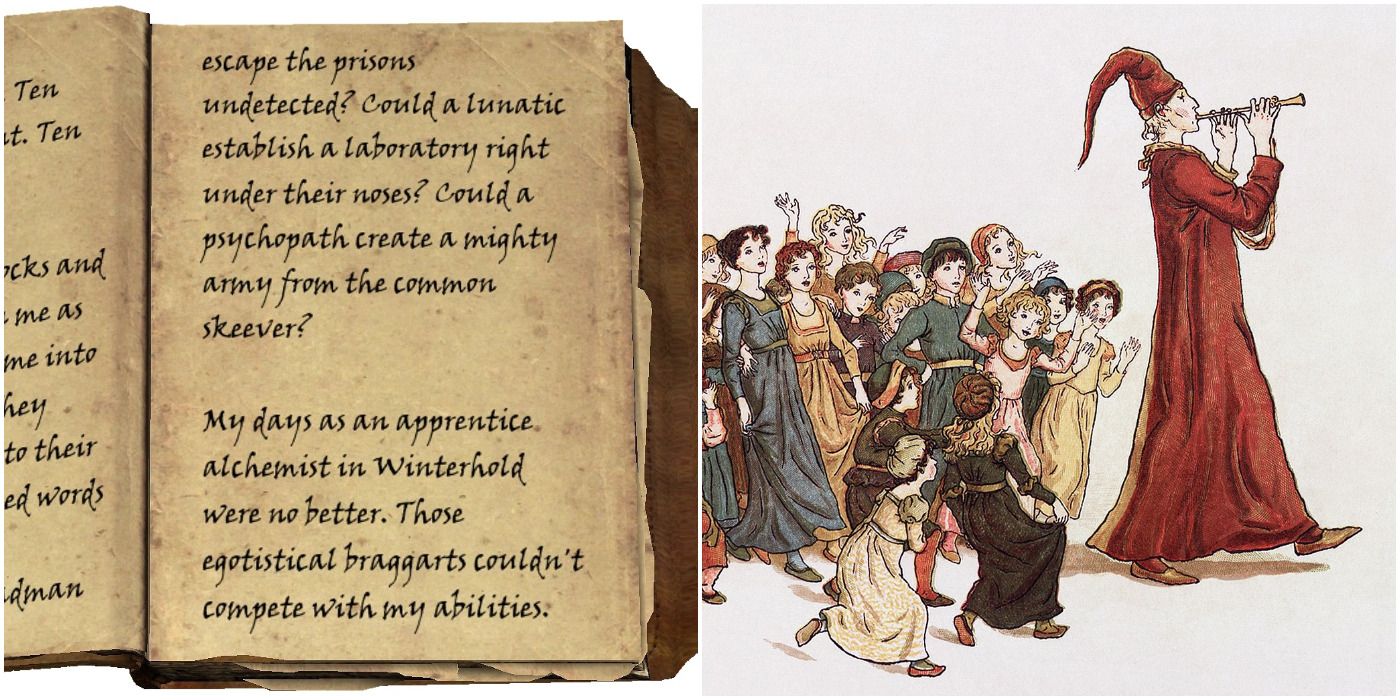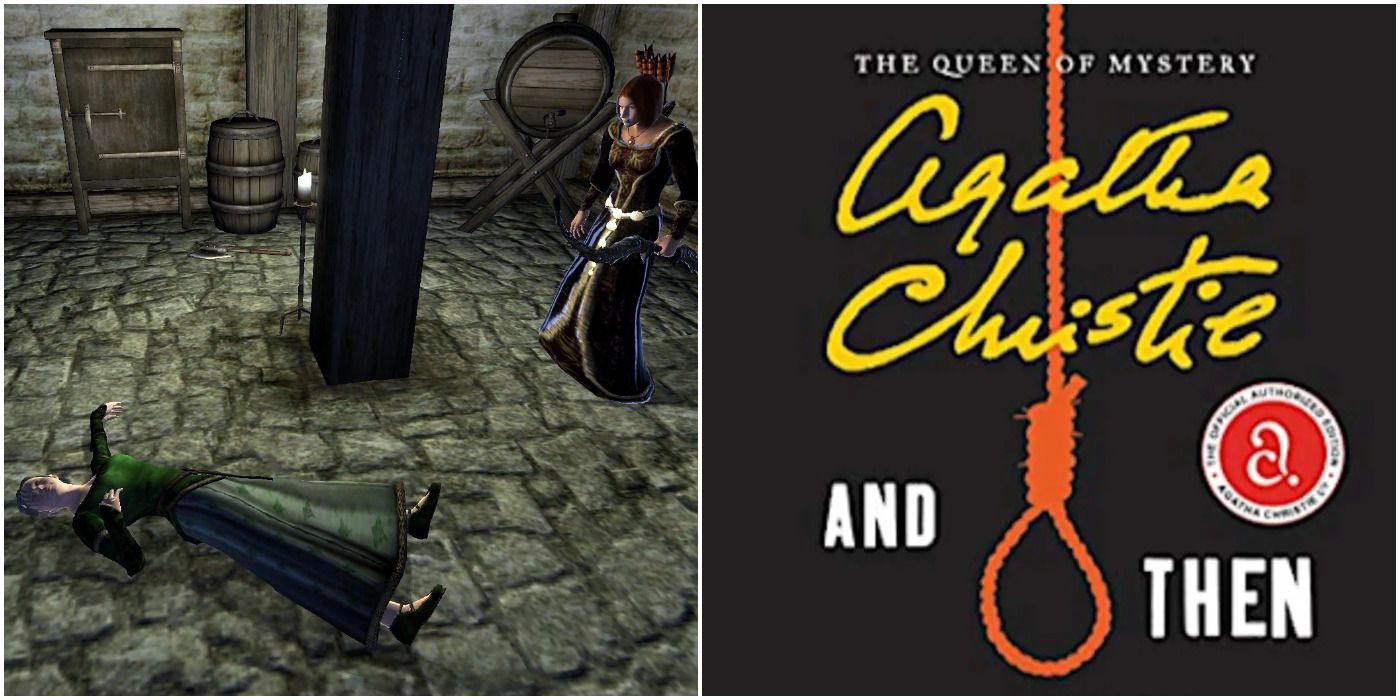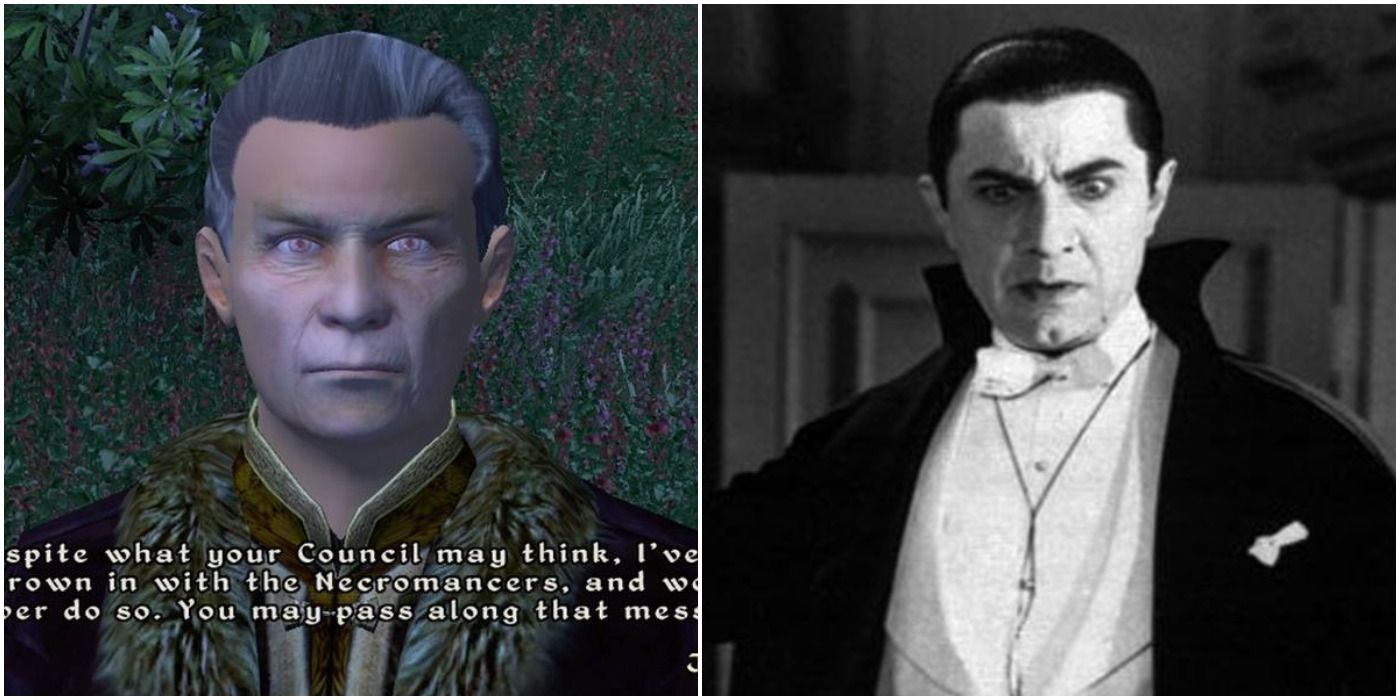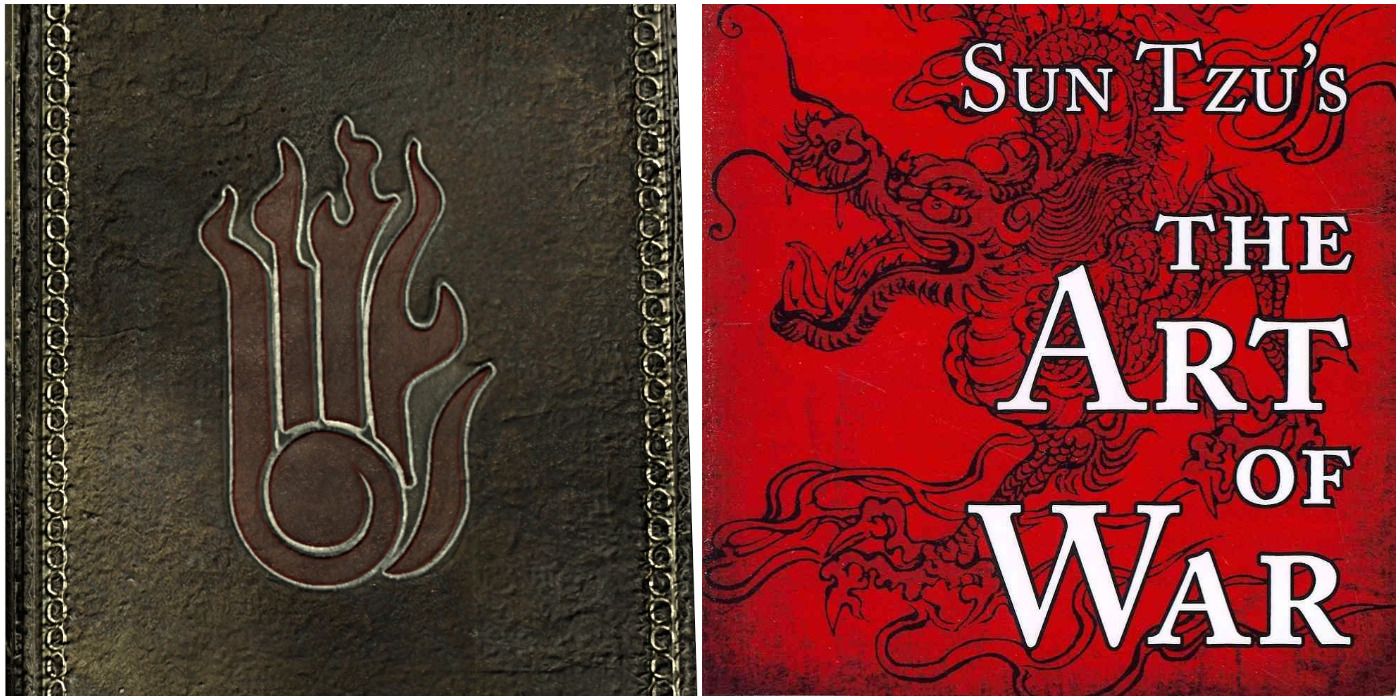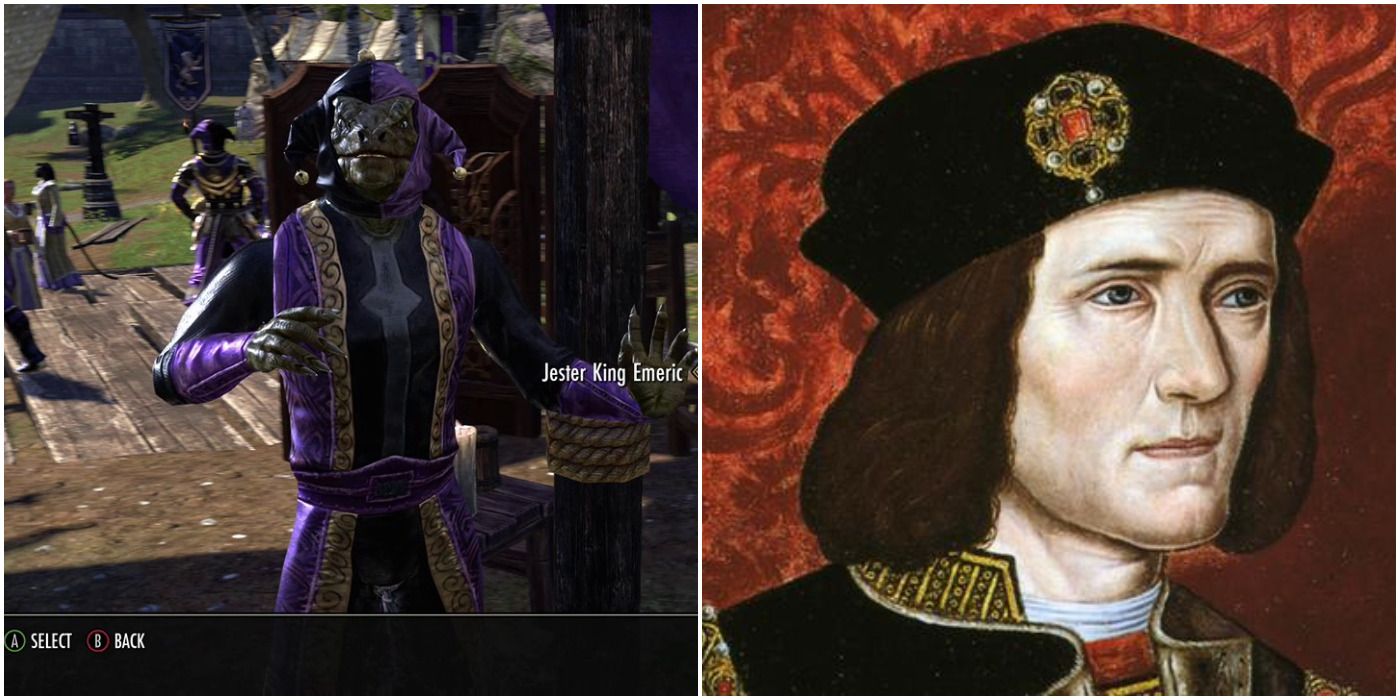The Elder Scrolls franchise has taken inspiration from a myriad variety of source materials. Literature has been at the forefront of these influences. The world that The Elder Scrolls created is huge and some of these literary references are harder to spot than others. The examples come from an assortment of genres that many bookworms should recognize.
These choice selections range from ancient times all the way to the present day. Classical, fantasy, mystery, it's all buried in the lore, characters, and quests of The Elder Scrolls. Although not every reference is mentioned these entries should make every book lover smile.
10 Nulfaga's Ramblings-Paradise Lost
Nulfaga is the Dowager Queen of Daggerfall. Known as the "Mad Witch" she seeks to punish those responsible for the murder of her son, King Lysandus. Speaking to her results in an avalanche of incoherent rambling. But listen closely and players may spot a few lines of famous dialogue from classic literature.
One of her lines comes directly from John Milton's timeless masterpiece Paradise Lost. It reads: "United thoughts and counsels, equal hope/And hazard in the once glorious enterprise/Joined with me once, now misery hath joined/In equal ruin!"
9 Sir Cadwell-Don Quixote
All manner of lost and pitiful individuals inhabit the Wailing Prison in The Elder Scrolls Online. Some have even lost their minds completely. Sir Cadwell is a prime example of the latter. Players who take a careful look at Sir Cadwell's appearance and listen attentively to his dialogue may be reminded of a famous character from Spanish literature.
Sir Cadwell bears a striking resemblance to Don Quixote de la Mancha, a wayward knight off his hinges looking for adventure. Cadwell's beard, the pot on his head, and the mandolin he carries all conform to characteristics often attributed to Don Quixote. The fact that both characters are clearly mad solidifies the comparison.
8 The Headless Horseman-The Legend Of Sleepy Hollow
If the Dragonborn finds himself wandering the wilds of Skyrim at night a unique special encounter may trigger. A ghostly rider with no head can be seen riding down the road before eventually disappearing. If followed, the apparition typically makes its way to Hamvir's Rest, specifically the cemetery.
This is a clear reference to Washington Irving's "The Legend of Sleepy Hollow." In that story Ichabod Crane is terrorized by the headless ghost of a seemingly long-dead Hessian mercenary. Unlike the ghost in The Elder Scrolls V: Skyrim, it's left up to the reader to decide whether or not the Headless Horseman is actually real in Irving's classic.
7 The Gildergreen-The Lord Of The Rings
The Gildergreen tree sits at the very heart of Whiterun. Worshipers of Kynareth regard the tree as sacred and continue to care for it while they try to stop its slow decline. A side quest is associated with restoring the proud tree to its former glory.
In The Lord of the Rings the White Tree of Gondor is in a similar state of decrepitude. As the power of Gondor faded so did the tree's vitality and beauty. It's only when Sauron is defeated and the true heir to the throne is restored that the tree is once again able to bloom and become healthy again.
6 The Sword In The Stone-The Legend Of King Arthur
In the Reach, outside of a tomb called Rebel's Cairn, sits a small pile of stones. Perched atop it is a steel sword stuck in one of the rocks. The weapon itself is nothing too special and many players may even miss it's there.
The sword in the stone is an obvious reference to the King Arthur legend. The sword in question is Excalibur, a magical weapon retrieved by Arthur as a boy. Only someone worthy enough to wield the sword is able to dislodge it. The Dragonborn will have no such trouble outside Rebel's Cairn.
5 Hamelyn's Journal-The Pied Piper
Living beneath the Honningbrew Meadery is a crazed vagrant named Hamelyn. At first, he seems like just another madman who becomes hostile when encountered. However, a closer inspection of his journal reveals his hair-brained scheme to train an army of skeevers in order to get revenge on his enemies.
Hamelyn shares many similarities with the Pied Piper of Hamelin from German myth. According to the legend the Pied Piper has the ability to control rats with his flute. When townspeople who hired him refused to pay the Piper for his services, he kidnaps the children with the same tune used on the rats.
4 Whodunit?-And Then There Were None
One of the more well-known Dark Brotherhood quests in The Elder Scrolls IV: Oblivion involves crashing a party and murdering all the guests. The game encourages the player to pull this off stealthily. One by one, as each guest is killed, the rest become extremely paranoid. No one can be sure just who the killer might be.
Agatha Christie fans will instantly recognize this storyline as a clear reference to one of her more celebrated tales. And Then There Were None establishes the same formula used by the "Whodunit?" quest. Party guests begin to suspect each other when people suddenly start turning up dead. The name of the quest is also a reference to the type of mystery sub-genre that Christie helped popularize.
3 Janus Hassildor-Dracula
The creepy Count of Skingrad has a bit of a secret. Janus Hassildor is actually a vampire in disguise. His wife, cursed with the same affliction, is in a coma and slowly dying. The count is desperately trying to find a cure for his wife before it's too late.
Count Hassildor, along with Castle Skingrad, take their inspiration from Bram Stoker's Dracula. Bran Castle, the fictional villain's supposed home, bears a striking resemblance to Hassildor's abode in Skingrad. Both individuals are secretly vampires, although Hassildor's motivations are a bit purer than Dracula's lust for blood.
2 The Art of War Magic-Sun Tzu's The Art Of War
The Elder Scrolls games are bursting with books and other reading materials. They serve to flesh out the world's lore and provide backstories for characters and organizations. All of these books have titles and some of them allude to real-life texts. The Art of War Magic refers to a very famous manuscript from ancient times.
The title invokes Sun Tzu's The Art of War. Written sometime in the 5th century BC it's an examination of ancient military strategy and tactics. The Art of War Magic, by comparison, analyzes the correct method by which battlemages should cast spells and other magic in order to defeat one's opponent.
1 Jester King Emeric-Richard III
When visiting Daggerfall the Vestige may come across the Jester's Day Festival. One of the fools present at the party is an Argonian calling himself Jester King Emeric. Conversing with him starts a few quests, but listening to his dialogue with other NPCs reveals a subtle easter egg.
When the Argonian is speaking to Jester King Jorunn the Nord will mention something about taking his clothes off to enjoy the warm air. Jester King Emeric will respond in horror by stating: "My kingdom for a scroll of frost!"This is an allusion to William Shakespeare's Richard III who utters the famous line: "A horse, a horse! My kingdom for a horse!"

